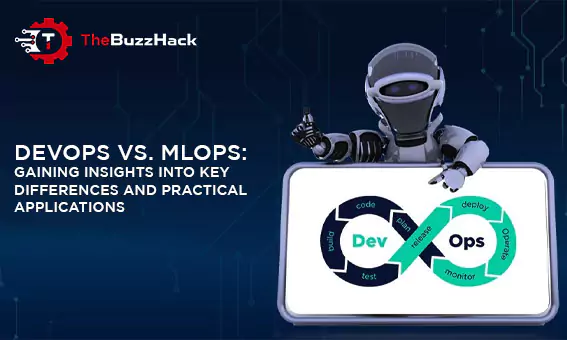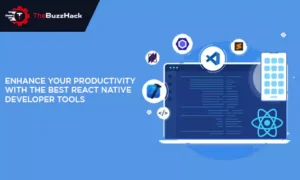
DEVOPS VS. MLOPS: GAINING INSIGHTS INTO KEY DIFFERENCES AND PRACTICAL APPLICATIONS
In the ever-changing world of technology and software development, two important approaches have become prominent: DevOps and MLOps. DevOps, short for Development and Operations, has transformed traditional software development and IT operations by focusing on teamwork, automation, and continuous integration/continuous delivery (CI/CD). On the other hand, MLOps, which stands for Machine Learning Operations, extends these principles to the field of machine learning and artificial intelligence. This article delves into the key insights, distinctions, and practical applications of DevOps and MLOps.
If you’re wondering about the main difference between DevOps and MLOps, you’re not alone. DevOps vs. MLOps is a popular topic. Software and application development companies are increasingly adopting these solutions. However, it’s important to note that DevOps and MLOps practices are distinct from each other. Both of them are modern technologies aimed at assisting developers in creating software and machine learning solutions.
When we look at MLOps practices, they serve not only developers but also various business divisions, including IT professionals, data engineers, and designers. These practices improve the design process, production models, and more. Let’s take a closer look at both MLOps and DevOps to understand them in detail.
What is MLOps?
MLOps, short for Machine Learning Operations, is a contemporary approach that combines tools and best practices to simplify the production of machine learning (ML) models. By following MLOps practices, organizations can make the process of deploying ML models easier and more efficient. These practices have proven to be highly beneficial for businesses, as indicated by the accompanying figures. They reveal that coding represents only a small part of the entire ML lifecycle when adopting DevOps development services. The aim of MLOps practices is to bring order to the coding process and various other aspects of ML.
DevOps, on the other hand, is both a cultural and technical strategy in software development. Its objective is to bridge the gap between development and IT operations teams, encouraging collaboration, communication, process automation, and the continuous delivery of software. DevOps focuses on reducing deployment times, enhancing software quality, and increasing the overall efficiency of development and operations.
In essence, MLOps is an extension of DevOps principles specifically tailored for machine learning and AI model development. It addresses the unique challenges presented by ML, such as data management, model version control, and model deployment. The ultimate goal of MLOps is to streamline the entire ML lifecycle, from data preparation and model training to deployment and ongoing monitoring.
Let’s take a quick look at MLOps to gain a thorough understanding of it
MLOps, in simple terms, is like an extension of the principles used in DevOps but applied specifically to the development of machine learning and AI models. It deals with the special difficulties that come with working on machine learning, like handling data, keeping track of different versions of models, and getting them ready for actual use. The main goal of MLOps is to make the entire process of creating and using machine learning models smoother and more efficient, starting from preparing the data and training the model, all the way to deploying it and keeping an eye on its performance.
Here are the key principles of MLOps explained in more accessible language:
Data Management: MLOps recognizes that data is super important in machine learning. It’s like the foundation of a building. So, it sets up practices to make sure we collect, clean, and store data properly.
Model Versioning: Just like with computer code, machine learning models need to keep track of changes. This helps us make sure we can recreate and understand what the model did in the past.
Model Training and Testing: MLOps makes it easier to teach and test machine learning models. It’s like having a robot do the training and testing work for us, so we can experiment and check how well the model is doing.
Model Deployment: When we’re happy with our machine learning model, MLOps helps us put it into action, like deploying soldiers on a battlefield. This is done smoothly, often using tools that are good at organizing and running models.
Monitoring and Governance: Once the model is in use, it’s important to keep an eye on it. MLOps helps us watch over the model as it works, making sure it’s doing its job well, doesn’t go off track, and follows the rules (like legal regulations). It’s like having someone checking if a machine is running properly all the time.
Machine Learning Components:
- Data Collection: Gathering the necessary data.
- Testing and Debugging: Ensuring the system works correctly.
- Resource Management: Efficiently using computing resources.
- Configuration Setup: Setting up the system for operation.
- Data Verification: Checking data quality and accuracy.
- Model Analysis: Evaluating the machine learning models.
- Serving Infrastructure: Managing the system’s deployment.
- Authentication: Ensuring secure access to the system.
- Feature Engineering: Creating useful features for the models.
- Process Management: Overseeing the entire workflow.
- Metadata Monitoring: Tracking and managing data information.
- Management: General system and project management.
Let’s take a closer look at the different stages in the machine learning process.
Understanding the Machine Learning Lifecycle: Machine learning is a unique approach that aids us in comprehending and solving various problems. It involves several key steps, including data collection, model creation, deploying models, model monitoring, and more. Let’s explore each of these steps in detail.
Model Monitoring: This step involves keeping a close eye on the performance of your machine learning model to ensure it doesn’t deteriorate over time. It includes monitoring for things like model drift, which can affect the model’s accuracy and reliability.
Model Deployment: Model deployment allows you to put your machine learning model into action, making it accessible for practical use in a production environment.
Data Collection: Data collection is the initial stage where you gather relevant data. This collected data is then analyzed to extract valuable insights and support various business operations. It also serves as the foundation for building your machine-learning models.
Understanding Issues: By analyzing the collected data, you gain insights that help you better understand and address the problems or challenges you encounter. This understanding is crucial for finding effective solutions.
Model Creation: With the collected data, you can start developing machine learning (ML) models. These models are trained using the gathered data, enabling them to make predictions or classifications based on the patterns and information within the data.
What are the fundamental principles of DevOps?
Discover these core principles, as they can be valuable for your understanding, especially when you’re considering hiring a Software Development Agency for your project. These principles provide essential insights, whether you’re dealing with DevOps or MLOps.
Collaboration: In DevOps, teams from different areas like developers, operations, and other stakeholders work closely together throughout the entire software development process.
Automation: Automation is a key element in DevOps, as it streamlines repetitive tasks, infrastructure setup, and testing, reducing errors and improving overall efficiency.
Continuous Integration (CI): Developers regularly integrate their code into a shared repository, with automated testing to identify and resolve integration issues early in the development process.
Continuous Delivery (CD): Continuous delivery builds upon CI by ensuring that the code is always ready for deployment to production environments, maintaining a deployable state.
Monitoring and Feedback: DevOps places a strong emphasis on real-time monitoring and feedback loops to promptly identify issues, evaluate performance, and implement necessary improvements.
Key Differences Between DevOps and MLOps in Simple Terms:
What They Deal With: DevOps focuses on code, system configurations, and infrastructure, while MLOps is all about machine learning models, datasets, and related stuff.
Testing and Validation: In DevOps, they mainly check if the code works properly, while MLOps does thorough testing and validation for machine learning models, considering things like data quality and model performance.
Deployment Complexity: MLOps has a tougher job when it comes to deploying machine learning models because they have to deal with things like different versions of models, making them available for use, and handling their scalability, which is different from regular app deployment.
Data-Centricity: MLOps really cares about managing data, keeping track of different versions of data, and knowing where the data comes from, which is not as big of a deal in DevOps
DevOps Use Cases:
Web and Application Development: DevOps helps streamline the process of creating and maintaining websites and software applications.
Infrastructure Provisioning and Management: It’s essential for setting up and managing the necessary hardware and software resources efficiently.
Continuous Integration and Delivery: DevOps facilitates a smooth and automated way to integrate code changes and deliver them to users without disruptions.
Microservices Architecture: DevOps is crucial for managing complex, interconnected microservices to ensure they work seamlessly together.
Cloud-Native Applications: DevOps is essential for building and running applications in cloud environments effectively.
MLOps Use Cases:
Predictive Analytics: MLOps is valuable for developing and deploying predictive models that can make data-driven forecasts.
Natural Language Processing (NLP): MLOps is crucial for creating applications that understand and generate human language, such as chatbots and language translation tools.
Computer Vision: MLOps plays a vital role in building systems that can interpret and analyze visual data, like image recognition and video analysis.
Recommender Systems: MLOps helps in creating recommendation algorithms used in e-commerce and content platforms.
Fraud Detection: MLOps is essential for developing models that can identify and prevent fraudulent activities.
Autonomous Vehicles: MLOps is crucial for the development of self-driving cars and other autonomous systems, ensuring they make real-time decisions safely.
These use cases demonstrate the practical applications of DevOps and MLOps and highlight why they are significant in today’s technology landscape.
Conclusion
DevOps and MLOps are important approaches in modern software development, each designed to tackle specific challenges. DevOps focuses on ensuring a smooth delivery of software applications, while MLOps extends these principles to the field of machine learning and artificial intelligence. It ensures that machine learning models are created, deployed, and maintained efficiently, consistently, and reliably.
To remain competitive in today’s technology-driven world, organizations should consider adopting both DevOps and MLOps practices, customized to their unique requirements and objectives.
Read More: Mastering Pay-Per-Click Advertising: Your Comprehensive Guide to PPC Marketing Services


